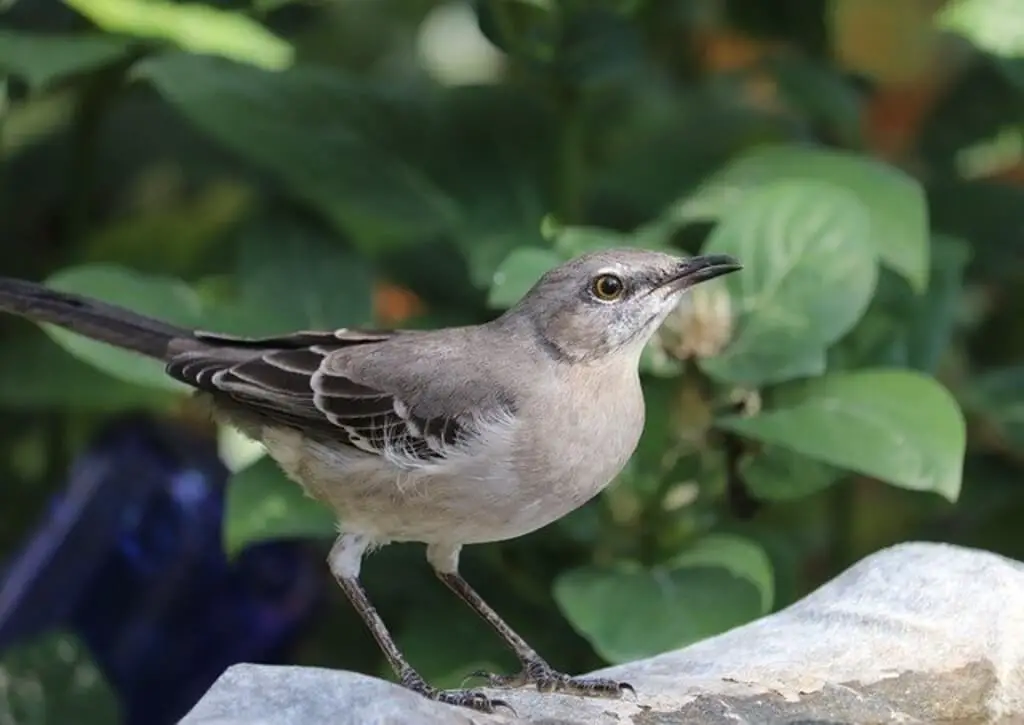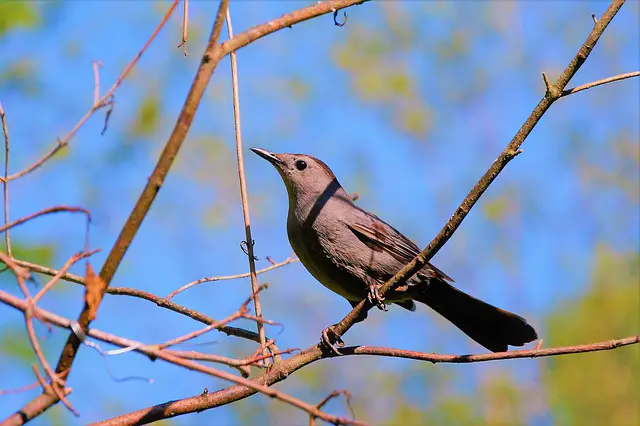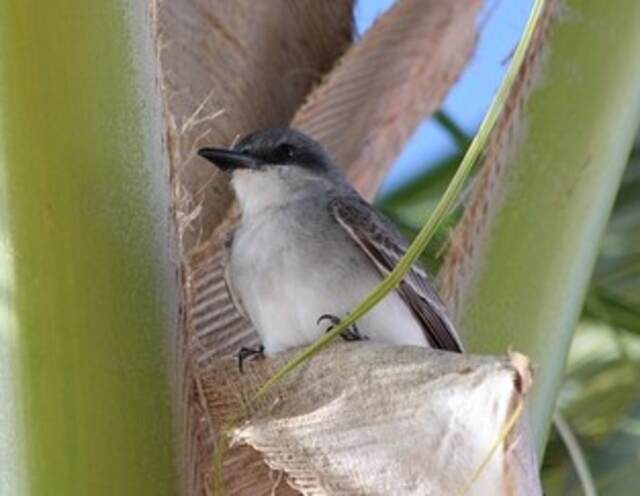Get ready to meet the lookalikes! Have you ever come across a bird and thought it was a mockingbird, only to realize it was something entirely different? This phenomenon is more common than you might think. Many birds share similar physical characteristics with the beloved mockingbird, making it difficult to tell them apart at first glance.
Mockingbirds are known for their gray-brown feathers, slender build, and long tails. Their distinctive features include white wing patches and a bold white stripe above their eyes. They are also famous for their ability to mimic the songs of other birds, making them a beloved species among birdwatchers.
But did you know that there are other birds that look like mockingbirds? Join us as we explore these lookalikes and discover what sets them apart from the real deal.
Table of Contents [show]
Northern Mockingbird (Overview)

The Northern Mockingbird is a medium-sized bird that is known for its beautiful singing voice and unique mimicry abilities. It can be found across North America, from coast to coast, and is a common sight in suburban areas.
Distribution Range
The Northern Mockingbird’s range extends from southern Canada down to Mexico and the Caribbean. It can be found in a variety of habitats, including parks, gardens, and urban areas.
Physical Characteristics
The Northern Mockingbird has a grayish-brown back, white underparts, and a long tail. It has distinctive white wing patches that are visible in flight. Its bill is slightly curved and black, and its eyes are yellow. They are roughly 9 to 10 inches in length and weigh around 1.4 to 2 ounces.
Habitat and Behavior
The Northern Mockingbird can be found in a variety of habitats, including residential areas, grasslands, and open woodlands. They are known for their territorial behavior and will defend their nesting area aggressively. They are also known for their beautiful singing voice and their ability to mimic other bird songs and even sounds from their environment.
Diet
The Northern Mockingbird has a diverse diet consisting of insects, fruits, and berries. They also eat small lizards and other small animals. They are primarily ground foragers and will search for food in open areas.
Comparison
Comparison to other birds that resemble the Northern Mockingbird The Northern Mockingbird is often confused with other similar-looking birds, such as the Gray Catbird, Brown Thrasher, and Curve-billed Thrasher.
However, the Northern Mockingbird can be distinguished by its long tail, white wing patches, and grayish-brown back. Additionally, its singing and mimicry abilities are unique to the Northern Mockingbird.
Birds That Look Like Mockingbirds
Northern Shrike
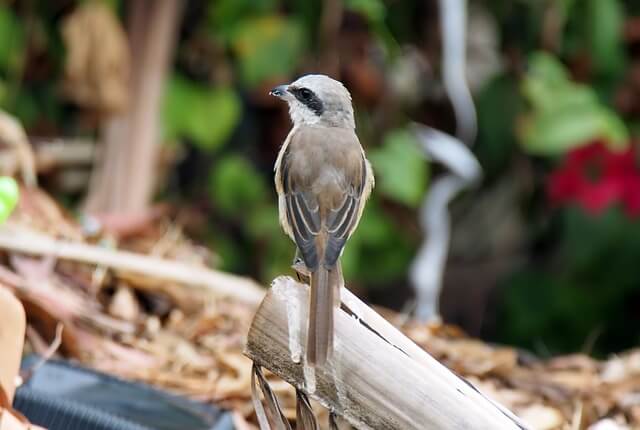
Northern Shrikes are in the same family as mockingbirds but with some major differences. One of these differences is that Northern Shrikes have a bigger head, black wings, and a hooked bill. They also have dark gray feathers on their back and light gray feathers on their belly. They have white patches on their tail feathers which is what gives them their name.
These birds will spend most of their time hunting for food by searching through foliage or catching insects in flight. Their diet consists mostly of insects such as spiders, ants, wasps and beetles but also consumes arthropods such as millipedes and centipedes.
They also feed on small vertebrates like lizards or frogs when they can be found The Northern Shrike can be found in North America from Alaska to Mexico and Central America down to Panama.
Gray Catbird
Northern Mockingbirds are bigger than Gray Catbirds with a lighter colored belly. They also have two wingbars that are white, that Gray Catbirds don’t. Gray Catbird’s natural habitat is forests, gardens and orchards while Northern Mockingbird’s natural habitat is open areas near woodland or farmland.
There isn’t much of a difference in their diet, they both eat mostly insects like grasshoppers, and caterpillars and even beetles, but the Northern Mockingbird can be found searching for their food on trees and bushes.
Gray Catbird is the state bird of Massachusetts and they’re all over New England, but it’s hard to find Northern Mockingbirds in this area because they’re found more on the eastern coast of North America
Townsends Solitaire
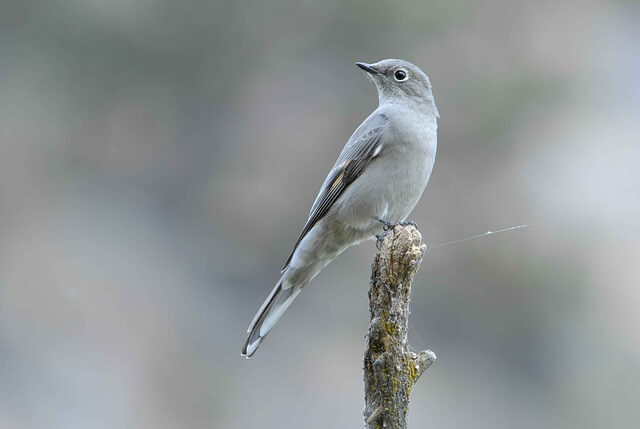
The Townsend’s Solitaire is from the thrush family. They are gray with lighter underparts, long tail with white streaks, black wings that have a yellow-brown pattern. Its shape and color markings look like a Mockingbird but is smaller.
Townsend’s solitaire natural habitat which can be found throughout eastern North America including all of Canada to southern New England. Townsends Solitaires have been known to travel long distances when it comes to food sources such as juniper berries.
Their diet consists of insects, spiders, berries during winter months when food sources are scarce, or its favorite juniper’s ripe which they can find during their travels from year-round or migrate from one place to another
Blue-Gray Gnatcatcher
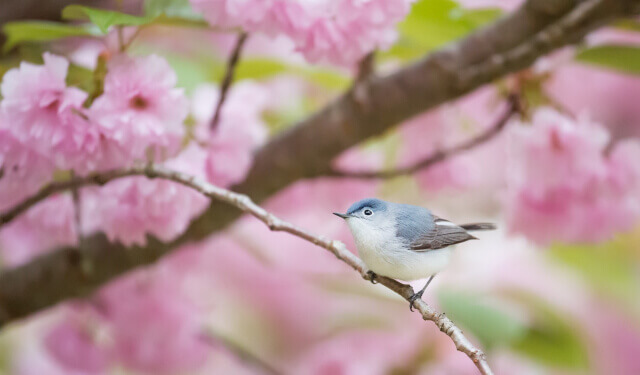
The blue-gray gnatcatcher is a small bird that lives in North America. It is one of the most common birds in the eastern and central United States, but it can also be found as far west as southern California.
Blue-gray Gnatcatchers look similar to mockingbirds but are smaller, and are light blue-gray, with with grayish-white underparts, a black tail with white edges. They have thin pointed bills that they use for catching insects in flight.
They are known for their territorial nature and they do not mix with other species of birds when nesting or feeding on food sources. Gnatcatchers love insects and mainly eat beetles, moths, butterflies), flies, ants, bees, wasps and spiders. These cute little birds also enjoy eating fruit like berries or figs
Sage Thrasher
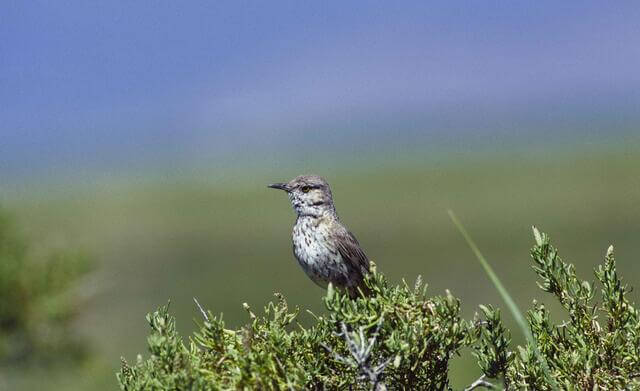
The Sage Thrasher is a medium-sized bird with grayish brown upperparts and whitish underparts. It has thin streaks on the breast, with red orange-tinged flanks. They are found in desert scrub and open grassland areas in the western United States, Mexico, Central America and South America.
The sage thrasher is a bird that lives primarily in deserts or semiarid regions where it forages for insects by day but roosts on or near ground level.
It is often mistaken for a mockingbird, but has distinctive markings on its breast and underside that help it stand out from other birds. One way to tell them apart is by their size, as they are slightly bigger with a shorter tail, and shorter bill.
Loggerhead Shrike
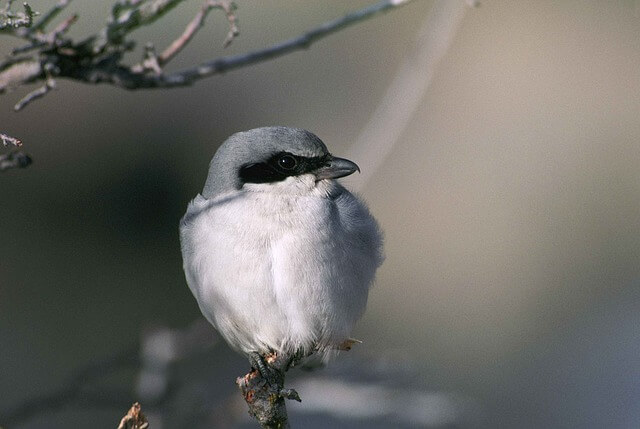
The Loggerhead Shrike is a songbird found in North America. They are found all over the continent and have been spotted as far north as Alaska. They are most common to the Eastern United States and live on farms, prairies, orchards, and old fields. The Loggerhead Shrike is a small, gray bird with black wings and white underparts.
They have black masks, a black tail, hooked bills and strong feet for capturing prey. Mockingbirds are often confused with the loggerhead shrikes because of their similar color patterns and habitat preference; however mockingbirds have much smaller head sizes and different beaks.
This bird has an interesting way of imitating other birds songs by making sounds with its voice box while they put their head back. This is called ‘vocal mimicry’. They are capable of imitating the sound of mockingbirds, they also imitate redwings, brown thrashers, hermit thrushes and others by creating similar sounding calls as well as trills.
Gray Kingbird
The Gray Kingbird (Tyrannus dominicensis) is a medium-sized passerine bird known for its bold personality and sharp vocalizations. It is predominantly gray with a darker tail, and has a distinctive white band across the underside of its tail. The Gray Kingbird can be found throughout the Caribbean, Central, and South America, and typically inhabits open areas such as fields, orchards, and forest edges.
Their diet consists mainly of insects, which they catch in flight. The Gray Kingbird is also known for its aggressive behavior towards other birds and animals, often chasing away intruders from its territory. Compared to the Gray Kingbird, the Mockingbird (Mimus polyglottos) has a wider range, spanning from the United States to South America. It is also more adaptable to various habitats, including urban environments.
While both birds have similar diets of insects and fruit, the Mockingbird is known to occasionally consume small vertebrates. The Mockingbird is slightly larger than the Gray Kingbird and has a longer tail. It is predominantly gray with white wing patches and a white stripe on its wings, whereas the Gray Kingbird has a distinctive white tail band.
Both birds are known for their vocalizations, but the Mockingbird is particularly famous for its ability to mimic other birds and sounds. In terms of behavior, the Mockingbird is less aggressive than the Gray Kingbird, but will fiercely defend its nest from potential threats.
Western Kingbird
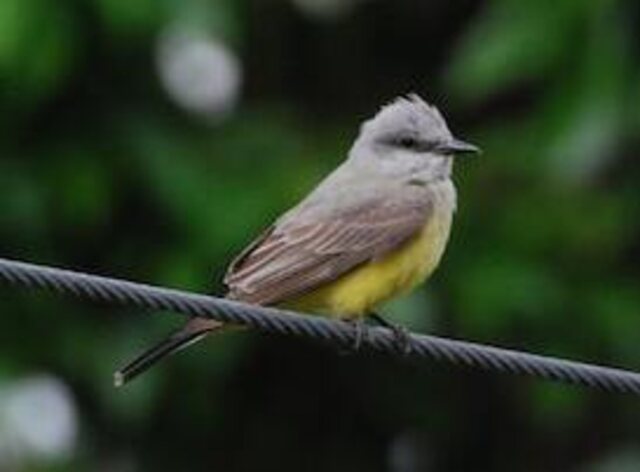
The Western Kingbird, a medium-sized bird with a length of around 8 inches, is a member of the flycatcher family. It is known for its pale gray head, back, and wings, with a black tail and white underparts. Found primarily in western North America, it prefers open habitats such as farmland, prairies, and open woodlands. The bird is an adept hunter, feeding on insects such as grasshoppers, beetles, and flies caught in midair.
The Western Kingbird and Mockingbird share similar habitats and diets, but there are some notable differences. The Mockingbird is found throughout North America, while the Western Kingbird is limited to the western region. The Mockingbird is larger, with a length of up to 10 inches, and has a gray-brown coloration with white wing patches.
Unlike the Kingbird, the Mockingbird is known for its varied song and mimicry abilities. It feeds on insects, fruits, and berries, but will also eat small reptiles and mammals. Both birds share a territorial behavior, but the Western Kingbird is known for its aggressive defense of its nest and young.
Canada Jay
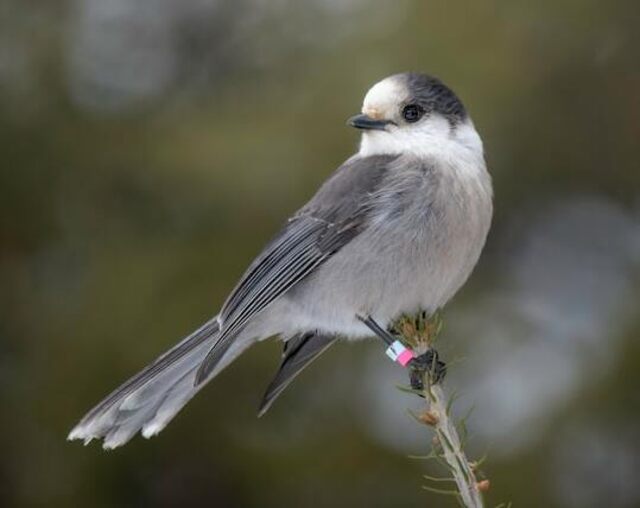
Canada Jays, also known as Gray Jays or Whiskey Jacks, are small to medium-sized birds found in the boreal forests of North America. They have grayish-blue feathers, a short bill, and a prominent black crest on their heads. Canada Jays are known for their curious and intelligent behavior, often approaching humans for food. They are omnivorous, feeding on a wide variety of foods including insects, fruits, berries, small mammals, and carrion.
They are also known to store food for later use in caches. In contrast, Mockingbirds are found in a much wider range, inhabiting areas from Canada to South America. They prefer open areas such as fields and brushy areas. Mockingbirds have a grayish-brown color with white patches on their wings and a long tail.
They have a longer bill than Canada Jays and are primarily insectivorous, although they also eat fruits and berries. Unlike the curious and social behavior of Canada Jays, Mockingbirds are known for their territorial behavior, aggressively defending their nests and territories.
Black-whiskered Vireo
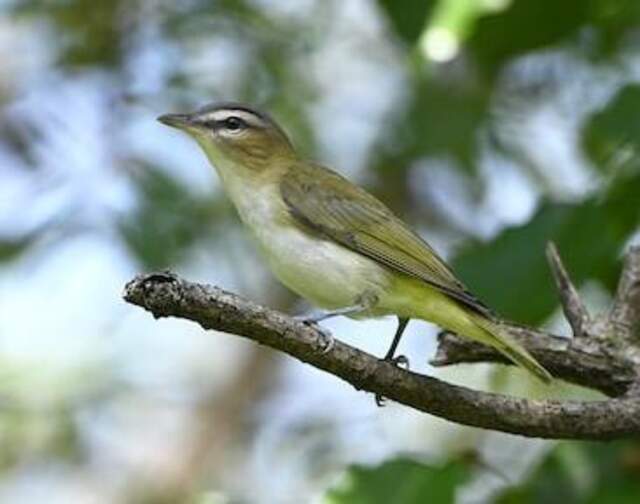
The Black-whiskered Vireo is a small, migratory songbird that belongs to the family Vireonidae. This species has a distinct black and white face pattern, with a black line through the eyes and a white supercilium. They are found in Central America, South America, and the Caribbean islands, primarily in tropical and subtropical forests, woodlands, and thickets. Their diet mainly consists of insects, including beetles, caterpillars, and spiders.
Black-whiskered Vireos are known for their unique vocalizations, with a series of sharp, clear whistles that sound like “twee-twee-twee.” In terms of similarities and differences to the Mockingbird, both species belong to the same class and order but belong to different families. While the Black-whiskered Vireo is relatively small, the Mockingbird is larger and more robust.
The Mockingbird has a wider range, found throughout North and South America, whereas the Black-whiskered Vireo is primarily found in Central and South America. The Mockingbird has a varied diet, including fruits and berries in addition to insects, whereas the Black-whiskered Vireo primarily feeds on insects.
The two species also differ in appearance, with the Mockingbird having a grayish-brown body and long tail, while the Black-whiskered Vireo has a greenish back and short tail. Additionally, the Mockingbird is known for its ability to mimic other bird songs, while the Black-whiskered Vireo has a distinct vocalization pattern.
Townsend’s Solitaire

The Townsend’s Solitaire is a thrush-like bird species that is commonly found in the western regions of North America. These birds are known for their unique vocalizations, which consist of both musical and harsh notes. They are typically grayish-brown in color, with a white eye ring and a bold, dark tail pattern. Townsend’s Solitaires prefer open coniferous forests and mountainous areas, where they feed on a variety of berries, fruits, and insects.
In comparison to the mockingbird, Townsend’s Solitaires have a more limited range, preferring to inhabit only the western regions of North America. They also have a different habitat preference, favoring coniferous forests over the open habitats favored by mockingbirds.
In terms of diet, both species feed on fruits and insects, but the Townsend’s Solitaire has a particular affinity for juniper berries. Additionally, Townsend’s Solitaires are generally smaller and less colorful than mockingbirds, with a more subtle appearance and more reserved behavior.
Conclusion
In summary, we have discussed 11 birds that look like the Mockingbird and compared their similarities and differences. While they may share certain characteristics, each bird has its unique features and behaviors that set it apart from the others.
By exploring these similarities and differences, we gain a greater appreciation for the diversity of bird species in our world.
Related Post: How to Attract Mockingbirds to your Yard? (Expert Tips)

